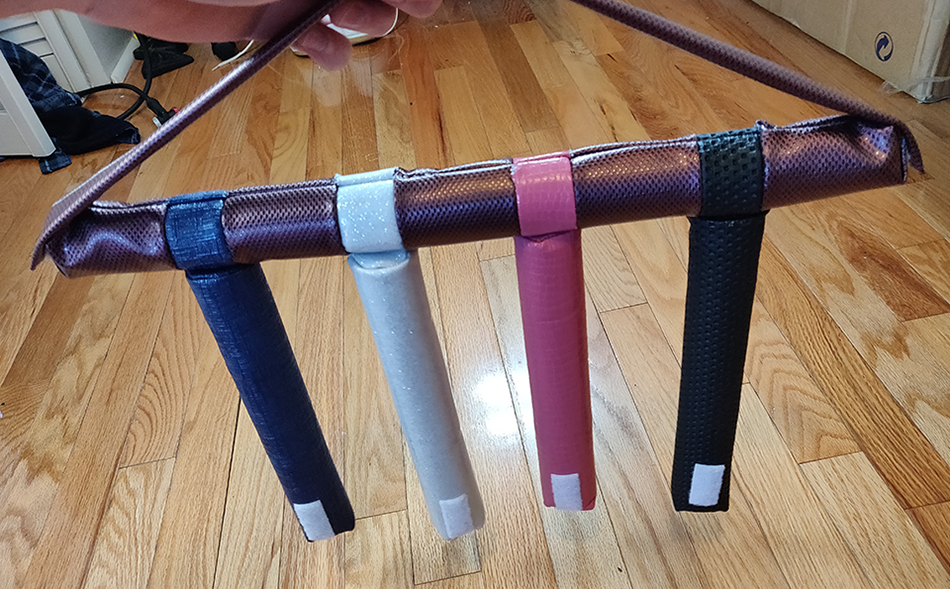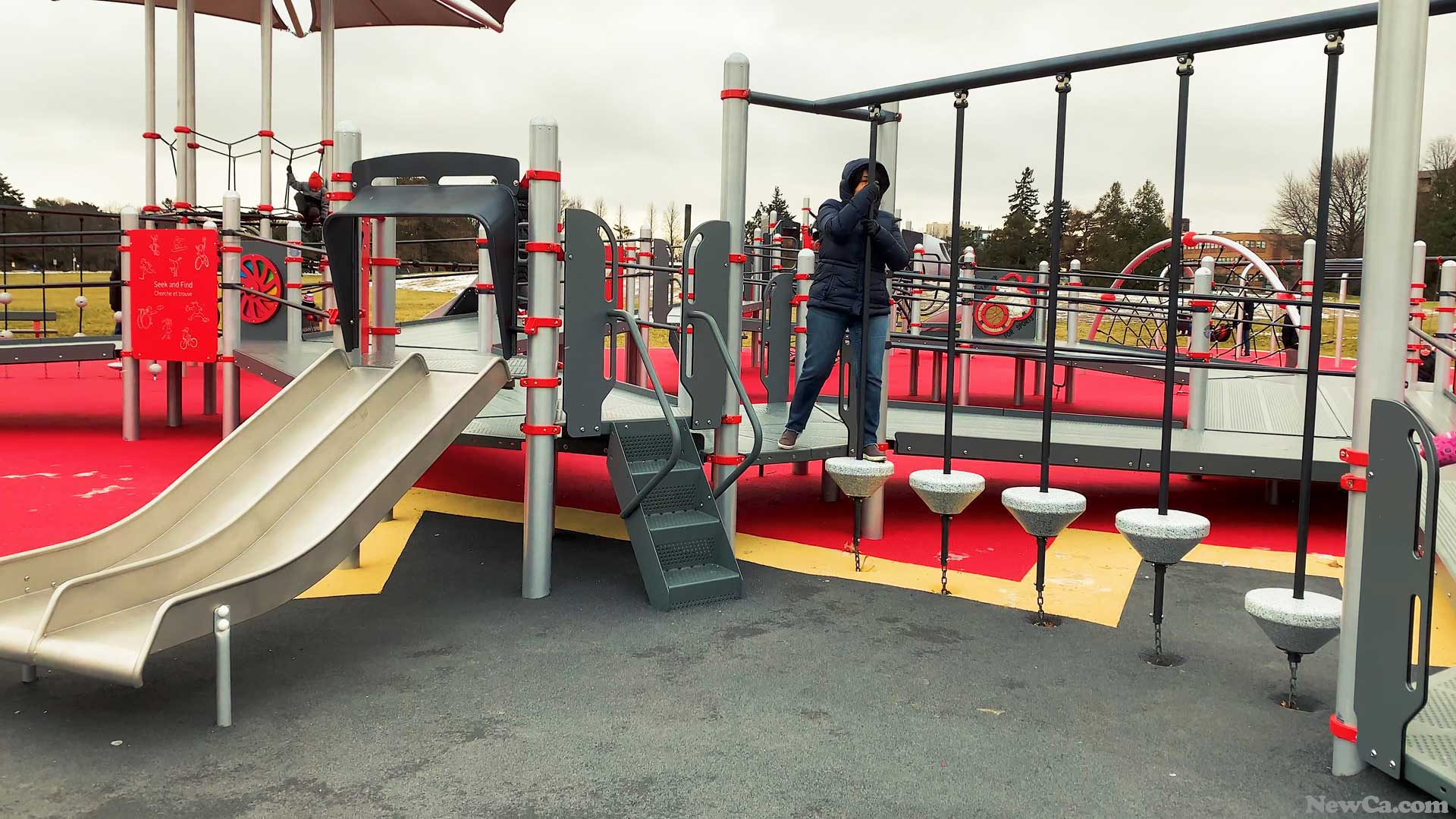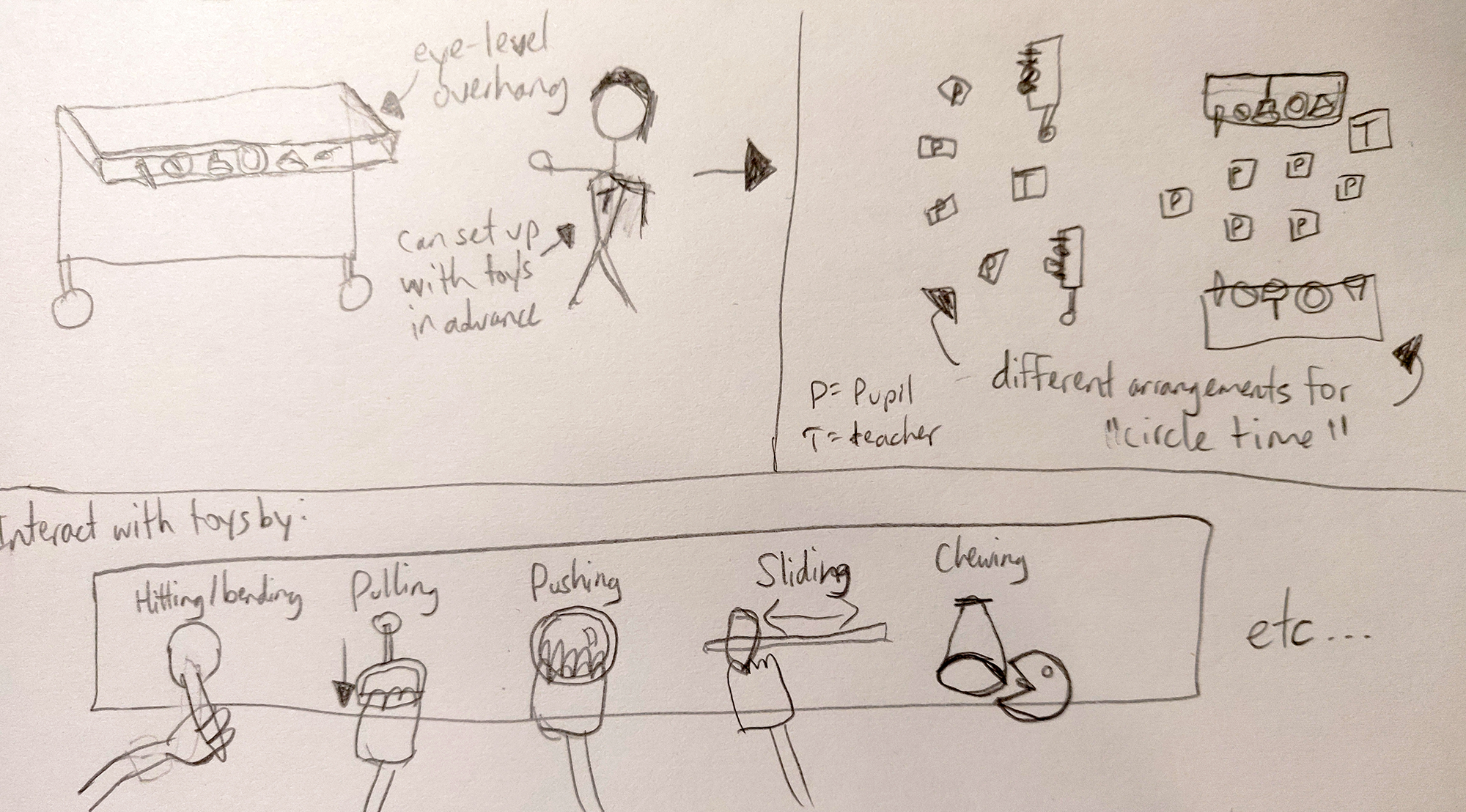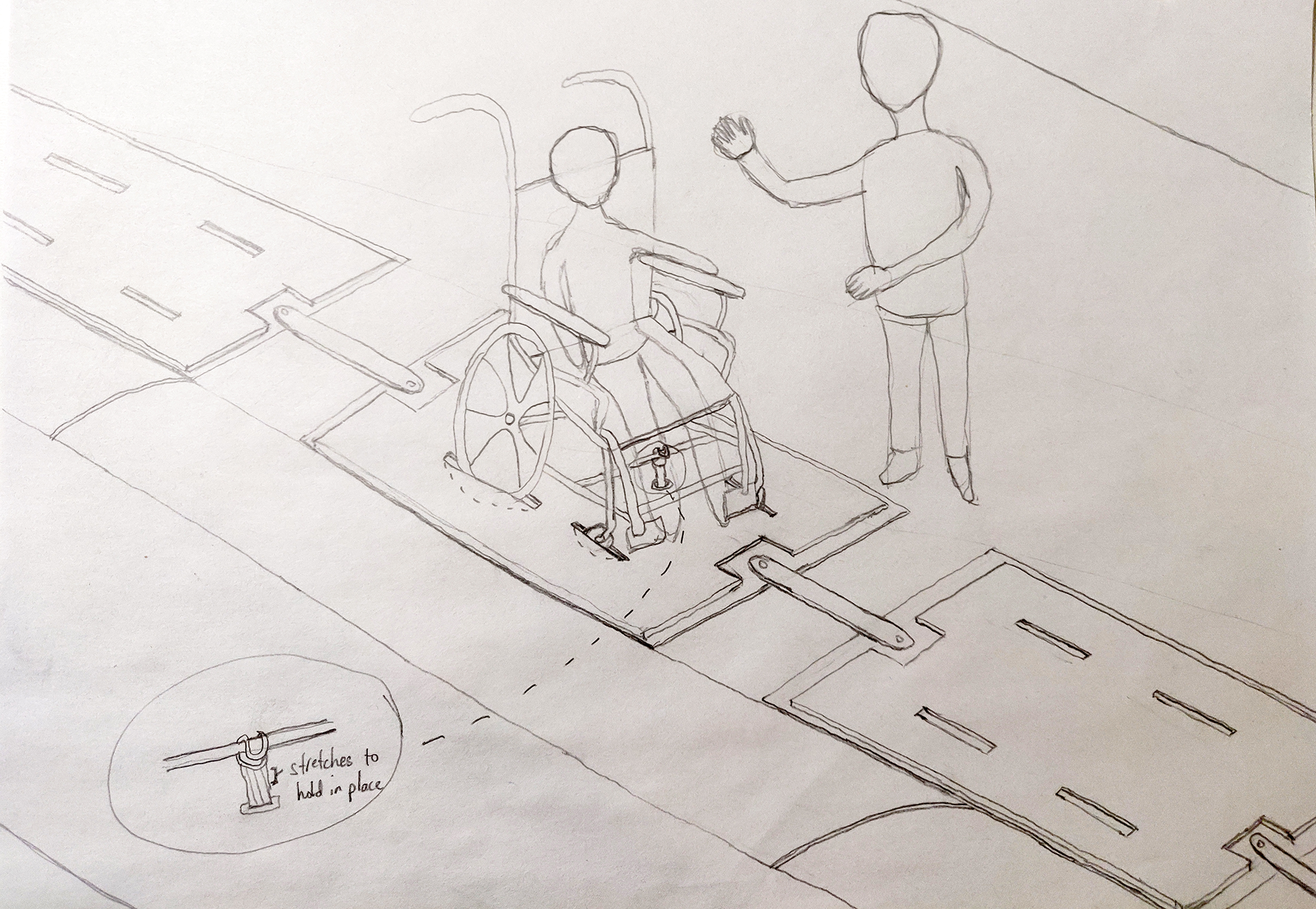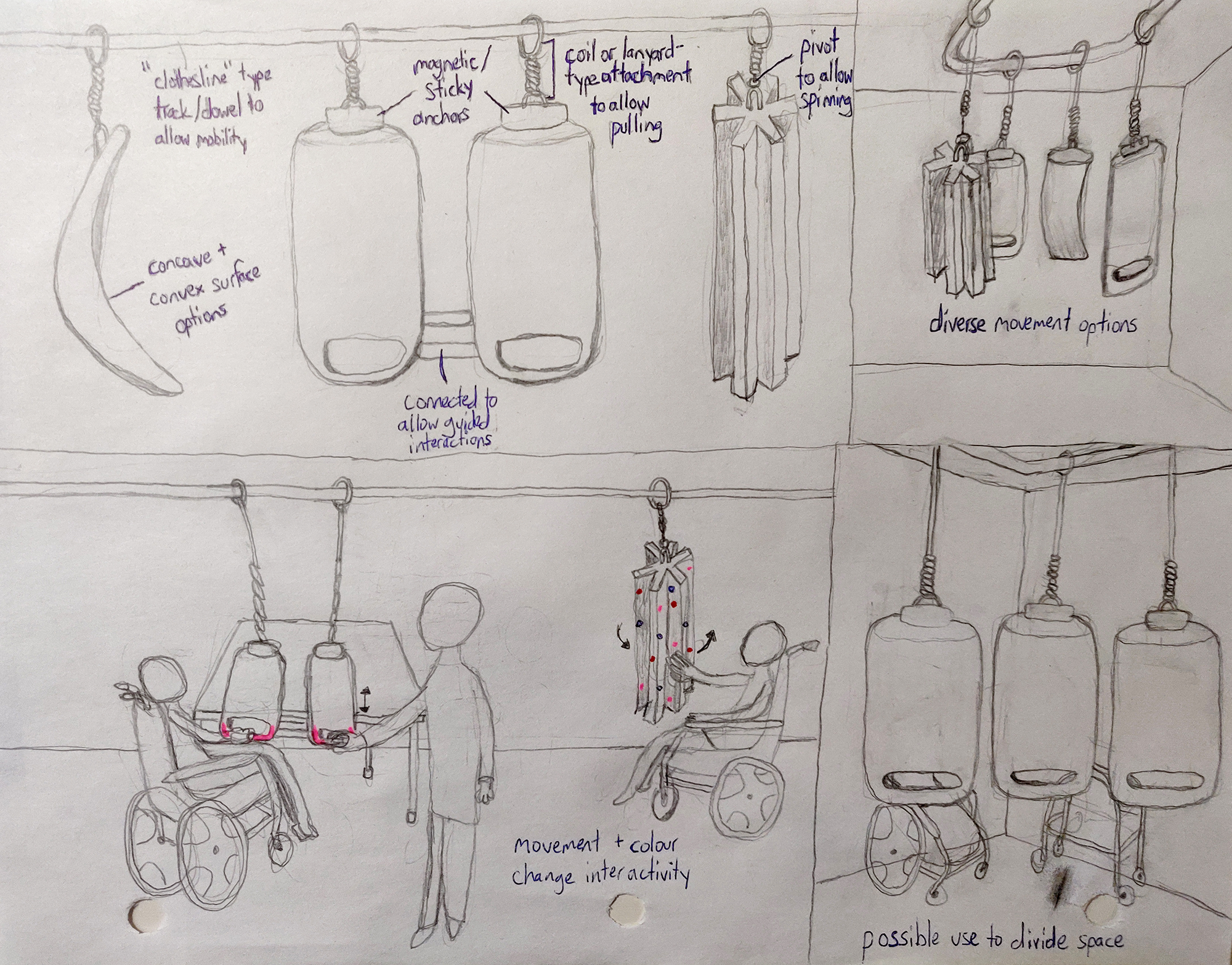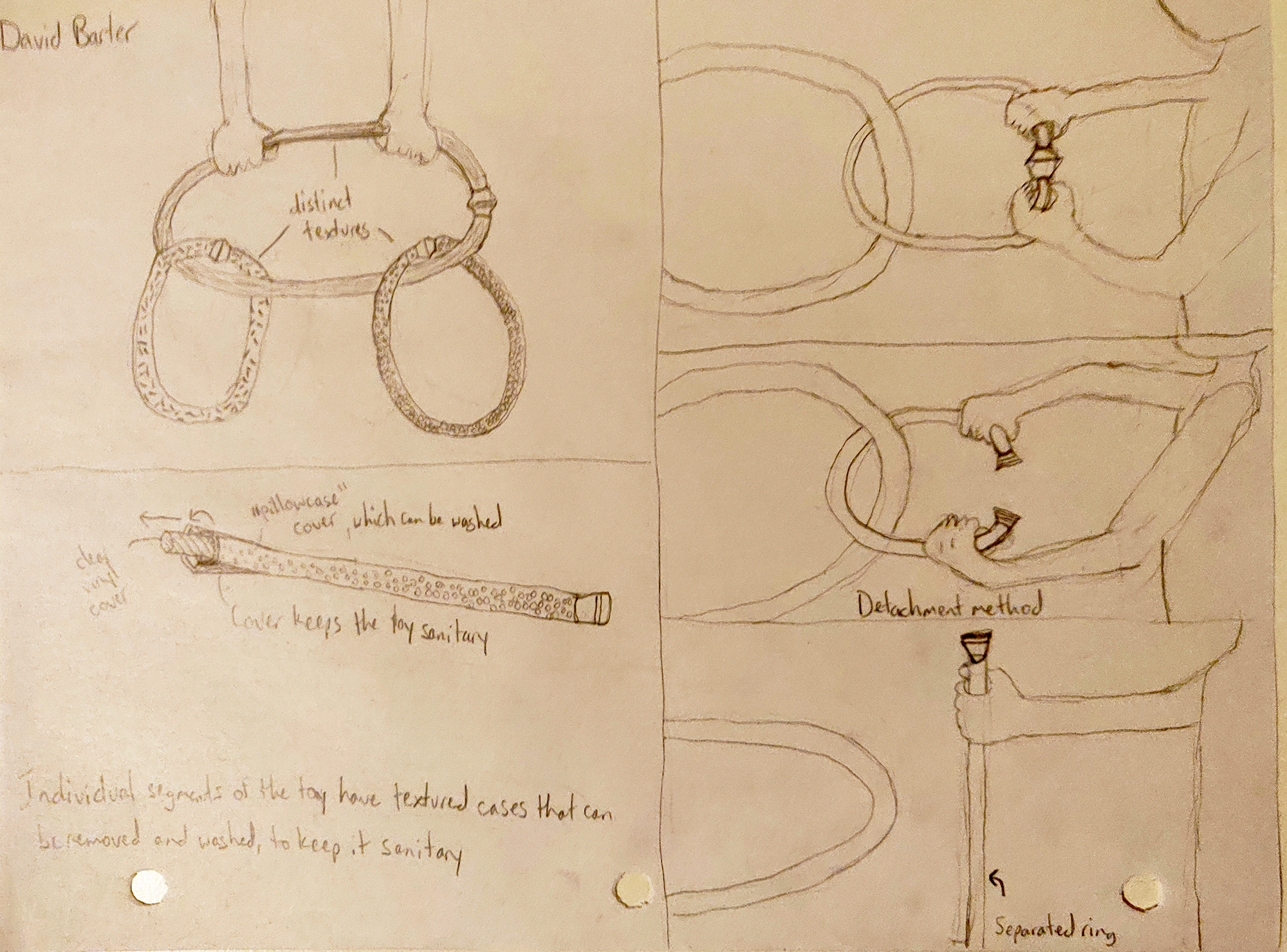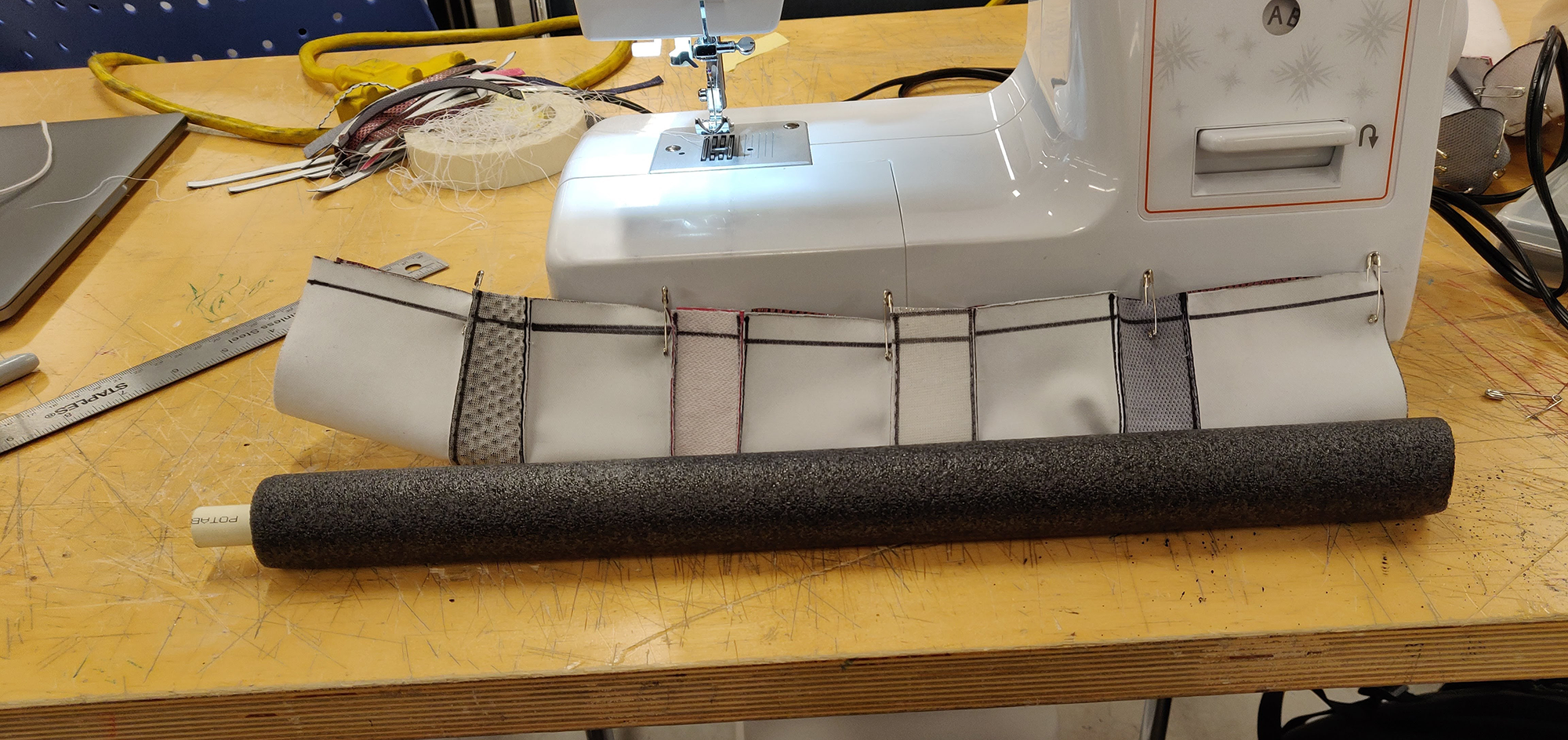Tactifoam Rods
Tactifoam Rods
A sensory toy designed for children with developmental disabilities that adds more diversity of visual, tactile and auditory stimulation to their playtime activities.
This project was conducted in OCAD University’s undergraduate Design for Health class. Its focus was to have students work on a project with the Beverley School, a downtown-Toronto based school for children with developmental disabilities, as a client. The process we followed was heavily focused on observational research at the school, research and foundational understanding of the types of disabilities pupils of the school often have and how to design for them, and making use of product design fabrication tools.
Problem Definition
What challenges do students, teachers and staff in the Beverley School face in their day-to-day lives that could be addressed through a design intervention?
How and when might greater diversity in sensory stimuli be introduced into the students’ play activities?
How might a stimulating sensory toy be designed for the students at Beverley School within their behavioural and safety needs?
Methods
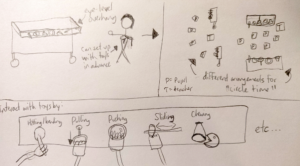
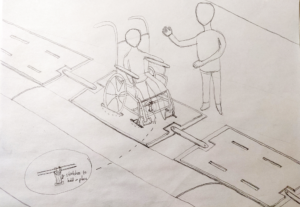
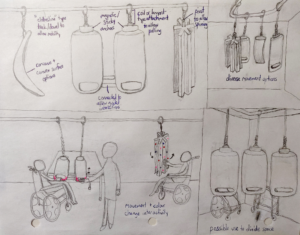
Secondary qualitative research
Primary qualitative research (observational)
Concept sketching
Physical prototyping (paper, cardboard, foam, plastic, fabric)
Analysis of observations & synthesis into insights
Design brief and criteria writing
Key Insights
Need for a soft physical form and use of food-safe materials after observing students’ habits with classroom objects and routines.
Students show a preference for many options of objects to play with, so integrating multiple distinct options into the toy would be optimal.
Students have distinct preferences for kinds of sensory stimuli, so having multiple sensory options (visual, auditory, tactile) is likewise optimal.
Solution Development
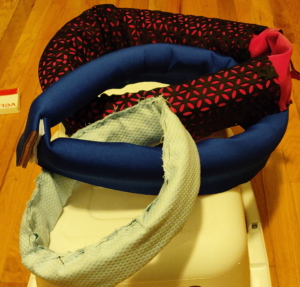
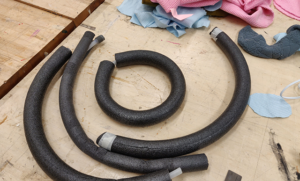
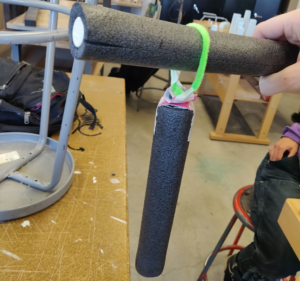
Early concept development through multiple rounds of sketching, evaluating ideas and refining.
Worked on concepts individually until grouping, then combined elements from strongest concepts into a new design brief.
Refined physical prototypes, changing from “interlocking rings” form to magnetically attaching rods, due to technical constraints of having safe detachable rings with materials inside.
Results
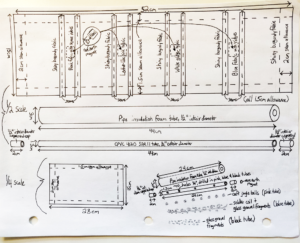
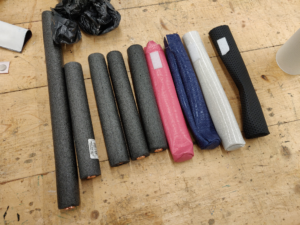
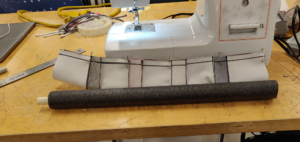
The final presentation of our product to the occupational and physical therapists from Beverley School went well, though with suggestions for improvement. Having perceivable audio qualities when the rods are shaken and rotated is a key factor that adds to the experience. The three rods that have material inside the tubes to produce audio act as a musical chime, a maraca-type instrument, and a rain stick, with the rain stick being the most challenging to perfect; this remains a work in progress.
We were also presented with the opportunity to make each rod able to display the classroom’s picture cards in a novel way, which is the reason for the velcro strips on each one. If improvements can be made in the future, post-class, this product could make a positive impact on classrooms that face similar challenges in engaging pupils in sensory rich play activities.
Design Process
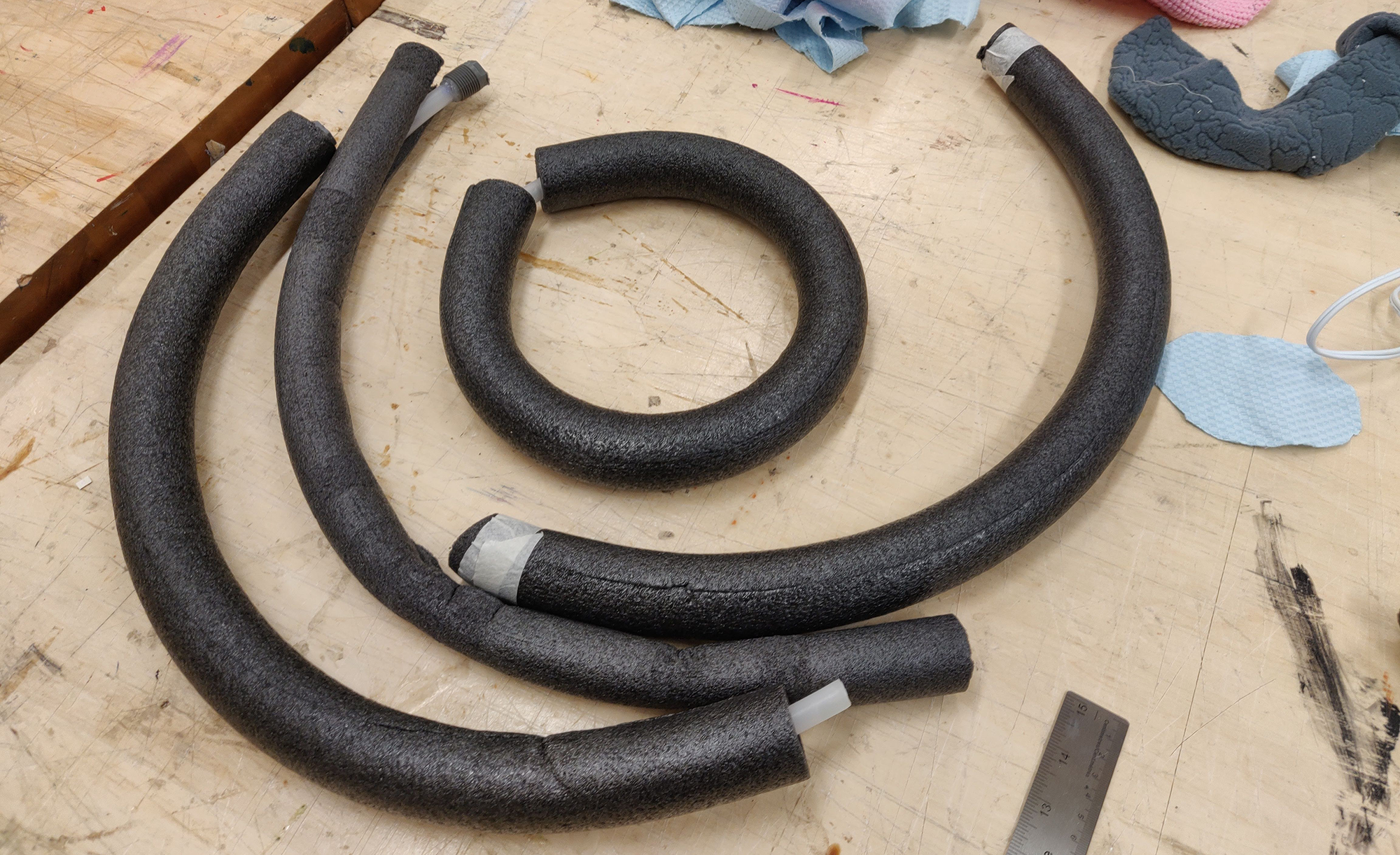 The process for this course was highly iterative, going between primary and secondary research phases and sketching/prototyping phases at a rapid pace. Our project was facilitated by design consultants from CoDesign, a company that manages partnerships between post-secondary design classes/students with marginalized communities. These facilitators, and several occupational and physical therapists who work at Beverley school, were our primary sources of feedback at each stage of the project.
The process for this course was highly iterative, going between primary and secondary research phases and sketching/prototyping phases at a rapid pace. Our project was facilitated by design consultants from CoDesign, a company that manages partnerships between post-secondary design classes/students with marginalized communities. These facilitators, and several occupational and physical therapists who work at Beverley school, were our primary sources of feedback at each stage of the project.
![]() Discovery of Problem Space
Discovery of Problem Space
Our process began with establishing a knowledge base of common disabilities present at facilities such as the Beverley school. It was necessary to be prepared in order to gain insight from our in-person observations.
![]() Observational Research
Observational Research
Each team attended a specific class: mine was one with pupils who had many of the most severe cognitive and physical impairments, with every pupil requiring mobility aids and assistance with basic tasks. I wrote notes and sketched as insight and ideas for how to help came to me.
![]() Rapid Concept Sketching
Rapid Concept Sketching
We rapidly moved into rounds of concept sketching, first with ten rough sketches of different concepts, then ten sketches of one or two concepts, per team member. I focused on my insights regarding classroom space usage, proposing a mobility aid “carousel” to unite storage and playtime, and ceiling-mounted hooks on cables to store items above.
![]() Design Brief & Criteria
Design Brief & Criteria
After refining to one concept per team member and working together to develop them, we proposed a design brief to guide the project forward, and design criteria outlining the “Must/Should/Could” features of our product(s). We prioritized pupil-to-pupil interactions, sensory stimulation, classroom suitability, and providing choices.
![]() Establishing Interlocking Rings Form
Establishing Interlocking Rings Form
My research into potential forms post-brief hit on an interlocking ring form, found by studying toys for a comparable audience. At this point in the project, my teammate and I had combined concepts: a toy that had diversity of form and sensory stimuli (my concept), as well as had soft, tactile qualities similar to a pillow (teammate’s concept).
![]() Presentation of Rough Prototype
Presentation of Rough Prototype
We each developed separate prototypes with shared qualities, but different forms and functionality. For mine, I made the assumption that the interlocking rings would be dangerous if made to be rigid, so my rings were made from a variety of foam materials that did not hold their shapes well, wrapped in textiles with diverse tactile qualities. My insights on this form proved well-founded, but the assumption was wrong: a rigid, but lightweight ring form would not pose any danger, it only needed to be food safe, in anticipation of the pupils trying to chew the toy.
![]() Refined Prototype: Pivot to Rods
Refined Prototype: Pivot to Rods
Now settled on the interlocking rings concept, we attempted to manufacture rigid rings that could attach and detach to one another, introducing that as a design criteria due to the need for individual rings to be given to pupils for play after making choices. The technical challenge of fabricating detachable rings was too high for our time constraints, so we pivoted to a detachable rod concept that functioned similarly enough to the rings that we could still achieve our design criteria in time.
![]() Final Product
Final Product
After falling behind due to the pivoting, we worked diligently on fabricating the rods and establishing their visual, tactile and audio qualities to great satisfaction. Some of the audio qualities required exploring different materials for the central tube, drilling holes in them, and trying different materials to fill them with (ball bearings, rock salt, beads, etc).
Individual & Group Project
Teammates
- Nathan Henry
My Responsibilities:
- Primary and secondary user research
- Concept sketching & prototyping
- Lead design brief writer
- Mid/High-fidelity prototyping (plastic, foam, fabric)
- September-December 2020
- Secondary research, in-situ observation, sketching, physical prototyping
- Design Research, Haptic / Tangible, Inclusive Design, Interaction Design
